&FAMILY FARM












SPECIAL SUPPLEMENT TO
MAGAZINE
2024
March 9,















SCOTTVILLE,
ZEELAND,
ELKHART,
(574)
HOWARD
•
•
BYRON
NEWPORT,
GREENVILLE,
(616) 754-4665
CALUMET
LEBANON,










2 • MARCH 9, 2024 Special Section to the Big Rapids Pioneer &FAMILY FARM MAGAZINE G TIRES, MADE EASY. family-owned business since 1978, Wonderland Tire comprehensive selection of agricultural tires and services moving. TURAL SERVICES
Tire Sales - All Brands
AG
High Floatation, Duals and Triples
Liquid Tire Ballasts - Rim Guard, TL90 and Chloride
Emergency Service
Tire Repair
Tire Replacement
Wheel Replacement A A provides compr to keep you AGRICUL
G WONDERLAND LOCATIONS
•
•
•
•
•
MI
757-4761
(231)
MI
748-0660
(616)
IN
264-7036
CITY,
MI (231) 937-4962
CENTER, MI
(616) 878-1581
KY (859) 261-4613
MI
CITY,
IL (708) 331-5700
MI
IN
TN (615) 784-6818 HOLLAND,
(616) 399-3070 RENSSELAER,
(219) 866-3831 WONDERLANDTIRE.COM
Farm-to-Table Initiatives
Farm-to-table initiatives have emerged as a beacon of sustainability and community resilience.
These movements, which emphasize the direct supply of locally produced food to consumers, are transforming the culinary landscape and revitalizing local economies. Beyond the wholesome appeal of fresh, seasonal ingredients, participating in farm-to-table endeavors holds a multitude of benefits, both for consumers and the communities they live in.
One primary advantage of farm-to-table initiatives is the boost to local economies. By fostering direct relationships between farmers and consumers, these initiatives create a symbiotic cycle of support that sustains regional agriculture.
As consumers increasingly seek transparency in their food sources, local farmers find a reliable market, reducing the dependency on large-scale, distant suppliers. This ensures a fair income for local producers and helps to safeguard the agricultural heritage of a region.
Moreover, farm-to-table practices contribute to environmental sustainability. The traditional food supply chain often involves long-distance transportation, leading to excessive carbon emissions. In contrast, sourcing food locally significantly reduces the carbon footprint associated with transportation. By choosing local pro-
duce, consumers actively participate in the fight against climate change, aligning their plates with eco-friendly principles.
Health and nutrition are paramount considerations in the farmto-table movement.
Locally sourced foods are inherently fresher, as they spend less time in transit and on shelves. This translates to higher nutritional value, better taste and a reduced reliance on preservatives. The movement champions the idea that the journey from farm to table should be short and sweet, allowing consumers to savor the authentic flavors of their region








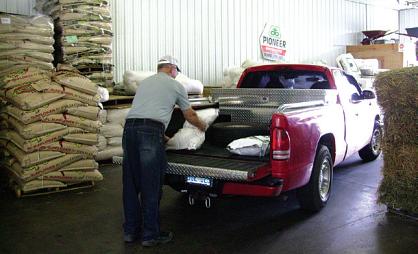

























MARCH 9, 2024 • 3 Special Section to the Big Rapids Pioneer &FAMILY FARM MAGAZINE
see INITIATIVes pAge 10 SO MUCH TO OFFER Visit Big Rapids Farm & Garden at 310 N. Four th Street with the Area’s Only Drive-Thr u Feed Store! Phone: 231-796-6363 The Area’s ONLY Drive-Thru Feed Store! Farm & Garden Full Line of Organic Insecticides, Fertilizers & Seeds! BULK GARDEN SEEDS Organic Seeds, Heirloom Seeds, High Quality Flower Bulbs Your source for Wildlife food plot seeds •Far m Seed, Chemicals, and Fer tilizers •Full Range of Pet Foods & Supplies •Livestock Feed and Supplies •4H Show Feeds
Community Supported Agriculture
In the heart of sustainable agriculture lies a model that nourishes the land and fosters a direct connection between farmers and the communities they serve — Community Supported Agriculture (CSA).
As the demand for locally sourced, fresh produce rises, setting up and managing a CSA program can be a rewarding venture for farmers seeking to cultivate strong community ties while providing a bountiful harvest.
By fostering direct relationships between farmers and shareholders, CSA programs become a beacon of sustainable agriculture, nourishing both the land and the people it serves.
At the core of any successful CSA program is community engagement. Begin by gauging local interest and building a network of potential supporters.
Hosting community events, participating in farmers’ markets, and leveraging social media are effective ways to create awareness and excitement around your CSA initiative.
PLAN YOUR HARVEST CALENDAR
CSA programs typically operate on a seasonal schedule, offering shareholders a variety of fresh

produce throughout the growing season. Plan your harvest calendar meticulously, considering the local climate and the types of crops that thrive in each season. A diverse selection ensures a rich experience for CSA members and promotes a sustainable, year-round operation.
OPTIONS AND COMMUNICATION
Tailor your CSA program to meet the diverse needs of your community. Offer different share sizes, delivery or pickup options, and even specialty packages like organic or themed baskets. Providing flexibility ensures that your program appeals to a broader audience, accommodating various preferences and lifestyles.
Establishing transparent and consistent communication is key to a thriving CSA program. Regularly update shareholders on the progress of crops, upcoming harvests and any challenges faced on the farm. Consider implementing

newsletters, social media updates or even onfarm events to keep the community engaged and informed about the food they are supporting.
Develop a user-friendly website where potential members can learn
about your program, sign up for shares and access important information. Use social media platforms to share behind-the-scenes glimpses of farm life, recipes, and connect with your community on
a personal level.
IMPLEMENT SUSTAINABLE PRACTICES
Embrace sustainable farming practices. Highlight your commitment to eco-friendly


agriculture, whether through organic methods, reduced chemical usage or water conservation. Shareholders increasingly value the connection between sustainable farming and the fresh, nutritious produce they receive.
Create memorable experiences by organizing on-farm events or workshops for CSA members. Invite them to participate in harvests, farm tours or cooking classes. These events strengthen the bond between farmers and shareholders and deepen the community’s appreciation for the origins of their food.
Encourage open communication and seek feedback from CSA members regularly. Use this valuable input to adapt and refine your program continually. Whether it’s adjusting crop varieties, altering pickup times or introducing new offerings, a responsive approach ensures that your CSA remains aligned with community expectations.

4 • MARCH 9, 2024 Special Section to the Big Rapids Pioneer &FAMILY FARM MAGAZINE
TOWING SERVICE …It Really Hauls! “24 Hour Towing Service” WING McKay ’s Towin g 231-937-581 9 9884 S. C ypres s Ave., Newaygo • Howard Cit y MO C C Mecosta-Osceola Career Center The Mecosta-Osceola Career Center provides Career and Technical Education to high school students enrolled in school districts within Mecosta and Osceola counties. See your high school counselor today to enroll for the 2024-25 school year. For more information call (231) 796-5805 or visit us at w w w.moisd.org/c te Agriscience and Natural Resources is a one-year program. Students in this program will work in the classroom, lab learning and developing skills to prepare them for careers in agribusiness, animal science, environmental series, food processing, natural resources, horticulture, and technical systems Additional areas of study include sustainable agriculture, propagation,forestr y, plant and greenhouse systems, animal anatomy/physiology, nutrition, reproduction, and health. Upon completion of this program, students will have gained a basic awareness of agriculture and natural resources and will have learned how the diversity of products in agriculture leads to future opportunities in the career field Coming this spring, a new greenhouse and the construction of a barn. 24-25 ENROLLMENT Agriscience & Natural Resources at
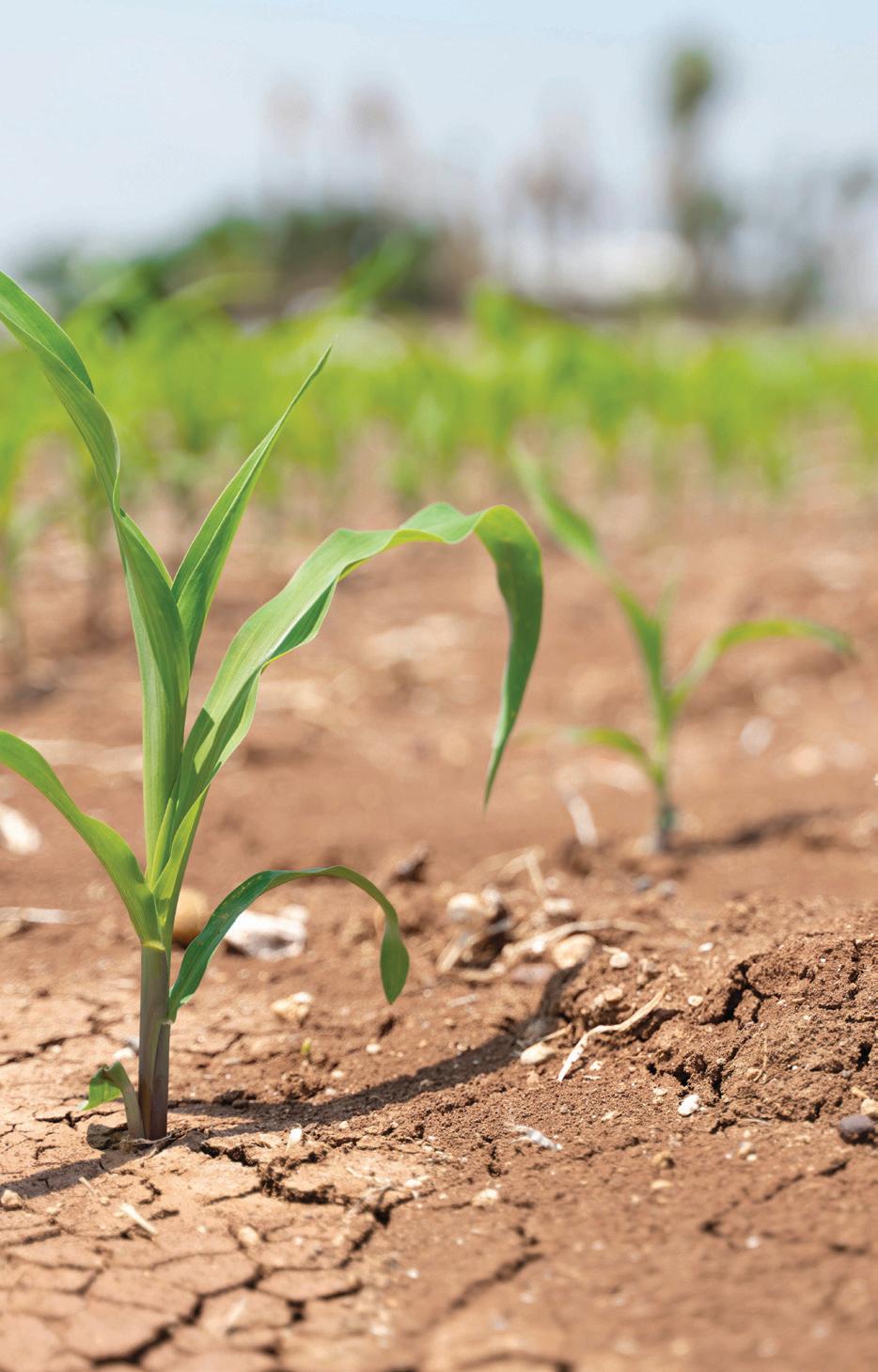
Dealing with Drought
As the specter of drought looms over agricultural landscapes, farmers and livestock owners find themselves grappling with the dual challenge of planning for and mitigating the effect of water scarcity on their crops and animals.
Drought, a recurring and often unpredictable natural phenomenon, poses a significant threat to food security and livelihoods. In light of this, experts stress the importance of proactive measures to build resilience in the face of these arid challenges.
Science.org reported that the past 22 years have been the driest in at least the past 1,200 years and that climate change is responsible for 40% of the intensity.
Drought conditions can wreak havoc on crops and livestock, leading to reduced



yields, diminished forage quality and water shortages. Farmers and livestock owners must recognize the signs and anticipate the onset of drought to implement effective management strategies.
According to Smartrain.net, drought conditions are made worse by deforestation, overgrazing, excessive irrigation and climate change.
Drought preparedness and management are integral components of sustainable agriculture in the face of an increasingly unpredictable climate.

By adopting a holistic approach that combines technological innovation, community collaboration and proactive planning, farmers can build resilience and navigate the challenges posed by water scarcity. As the agricultural sector continues to adapt to evolving environmental conditions, the implementation of these strategies becomes not only a necessity but a proactive step towards securing the future of global food production.
DEVELOPING A PLAN
Preserving water
resources is paramount during drought periods. Farmers should invest in water-efficient irrigation systems, implement rainwater harvesting techniques and explore alternative water sources to safeguard against shortages.
Diversifying crops can be a crucial element of drought preparedness. Certain crops are more resilient to water scarcity, and incorporating drought-resistant varieties into the planting strategy can help
see DROUgHT

MARCH 9, 2024 • 5 Special Section to the Big Rapids Pioneer &FAMILY FARM MAGAZINE
Call For Free Consultation 616-754-9437 Selling Real Estate, Equipment & Machiner y & All Types O f Personal Proper ty FOR LIVE AUCTION DETAILS SEE www.merrittauctionservice.com NE W FACILIT Y ! Loc ated at 1213 Fairplains St. Greenville, MI 48838 Live Consignment Auction at New Location May 4th @ 10am Call today to add your items or collection. Online A uctions www.mer rittauctionser vice.hibid.com SERVING OUR COMMUNITY FOR OVER 13 YEARS! Dr. LynnMarie S. Leyder Doc tor of Chiroprac tic info@serenitywellnesschiro.com 616-887-2178 542 S. State Street • Spar ta MI 49345 www.serenitywellnesschiro.com Serenity Wellness Chir opractic Center • Spinal Adjustments • Extremity Adjustments • Cold Laser • Traction • Decompression • Medical Massage • Deep Tissue & Relaxation Massage • Hot or Cold Stone Massage • Prenatal Massage Your P ar tner in O ptimal Per f or manc e Call today to schedule your consultation! Chiropractic care can hep reduce pain, increase flexibility and protect against injury.
pAge 11
Succession Planning
As family-owned farms navigate the ebb
Ensuring a smooth transition to the next generation preserves the legacy of the farm and sets the stage for continued success.
Farm succession planning is not merely a legal formality; it is a dynamic and ongoing process that requires adaptability and foresight.
PRESERVING A LEGACY
Family-owned farms are not just businesses; they are living legacies woven into the fabric of generations. Succession planning safeguards the hard work, traditions and values embedded in the farm, allowing them to flourish and evolve under the stewardship of the
next generation.
Initiate conversations about succession early and maintain open lines of communication. Discussing the future of the farm, roles and responsibilities helps align expectations and prevents misunderstandings. Encourage active participation and input from all family members involved.
Clearly define who will take on leadership roles in the next generation. Consider factors such as skills, passion and commitment. A comprehensive understanding of each successor’s strengths and aspirations
see pLANNINg pAge 11

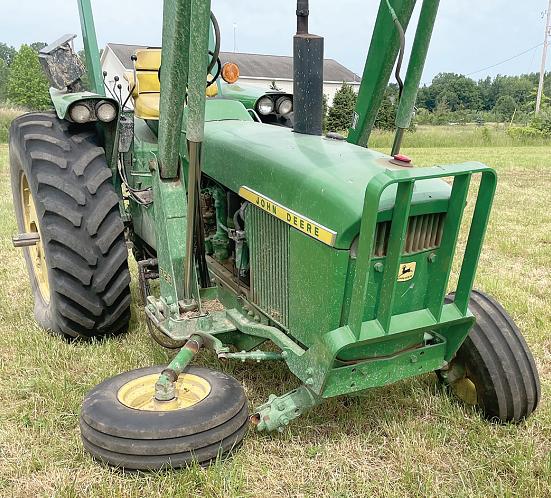

6 • MARCH 9, 2024 Special Section to the Big Rapids Pioneer &FAMILY FARM MAGAZINE Kyle Harter Welding and Fabric ation ll c Kyle Harter aWS training QualiFied • Fully licenSed and inSured 1 (616) 886-9234 k yle@k ylehar t er weldandfab.com k ylehar t er weldandfab.com VISIT OUR WEBSITE F OR PHOTOS OF PAST PROJECT S AND F OR MORE INF ORMATION. • StainleSS, aluminum and c arbon Steel Welding • PiPe Fit ting, cuSt om & Structural Welding • mobile Service available
and flow of generations, they have to cultivate the art of succession planning.

What consumers can do to support local farmers
Farming has never been a vocation for individuals looking for easy work. Farmers typically work long hours, braving the elements regardless of how unpleasant the weather may be. All that hard work ensures individuals who live in rural, urban and suburban communities have constant, readily available access to healthy foods. Such devotion merits support, and thankfully there are many things consumers can do to show their appreciation for local farmers.
• Buy fresh foods at your

local farmers market. Farmers markets are many foodies’ favorite places, but they aren’t exclusive to individuals with a passion for food. Everyone needs to eat, so why not eat foods grown locally, which are generally more fresh and appetizing than imported fruits and vegetables sold at chain grocery stores? Even individuals who don’t typically eat fresh fruit and vegetables can find something delectable at a local farmers market, where anything from homemade tomato sauces to locally raised fresh beef and pork
might be on sale.
• Order directly from local farms. Some farmers have embraced the e-commerce revolution and begun selling the foods they grow to consumers via their own websites. Research local farms and determine if it’s possible to buy directly from them. Farms may offer delivery or pick-up, and consumers can enjoy fresh foods even more knowing that they helped farmers earn higher profits by buying directly from them.
• Check labels before
buying in local grocery stores. Packaging labels will indicate where fruits and vegetables came from. When possible, choose items produced by local farmers. This may include fruits, vegetables, meat, pork, or even desserts like pies. Locally produced foods often taste more fresh than items sent from overseas or distant farms, and consumers will feel better knowing they helped to support local farmers.
• Spread the word. Get the word out after a satisfying experience with local farms and
farmers. Whether it’s buying food from farms or taking advantage of family days that let kids enjoy a day on the farm, sharing positive experiences via social media or word-of-mouth can be a great way to inspire your neighbors to support local farmers as well.
Consumers can do much to support hardworking local farmers. In addition to feeling good about supporting their rural neighbors, consumers also might feel good when they sit down and enjoy a meal featuring locally grown, fresh foods.









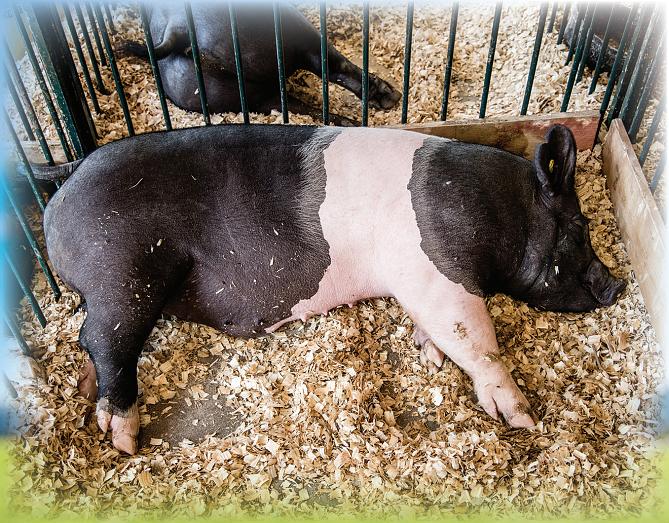





MARCH 9, 2024 • 7 Special Section to the Big Rapids Pioneer &FAMILY FARM MAGAZINE 123 N C hestnut Stre et Re e d City, MI 49677 e C y, (231) 791-5005 • CUSTOM MIXING FEEDS • WE C ARR Y U MBERGER & SHO WRITE SHO W FEED BR ANDS • 4 H SHO W FEEDS AND PRODUC T S • BIRD SEED & FEEDERS • FULL LINE OF DOG / PET FOOD Stop In To day...
Livestock Health and Wellness
As spring breathes new life into pastures and barns, livestock owners are presented with an opportune time to focus on the health and well-being of their animals.
The transition from winter to spring brings unique challenges and opportunities for livestock care.
Prioritizing the health and wellness of your livestock sets the stage for a productive and thriving season. Incorporating best practices into a livestock management routine ensures that animals weather the challenges of spring and flourish in an environment that promotes their health and vitality.
Spring marks an ideal time to revisit and update vaccination schedules. Consult with a veterinarian to assess the specific needs of your livestock and tailor a vaccination plan accordingly. Ensure vaccinations are up to date to protect against common diseases prevalent during warmer months.
Warmer temperatures create favorable conditions for parasites. Implement a strategic parasite control program to safeguard livestock from internal and external parasites. Regularly deworming
and monitoring for signs of infestation are essential components of a comprehensive health strategy.
Adequate pasture management is crucial for promoting livestock health. Rotate pastures to prevent overgrazing, which can lead to nutrient deficiencies and soil degradation. Monitor grass growth and ensure a balanced diet by providing access to different grazing areas.
Evaluate the nutritional needs of your livestock and adjust feed accordingly. Spring is a critical period for lactating animals and growing young stock. Ensure access to high-quality forage, and supplement with appropriate feed to meet the increased nutritional demands.
Spring grass may not always provide all the necessary minerals for optimal livestock health. Supplementing with mineral blocks or feed additives can help address any deficiencies and support overall well-being. Consult with a veterinarian to deter-
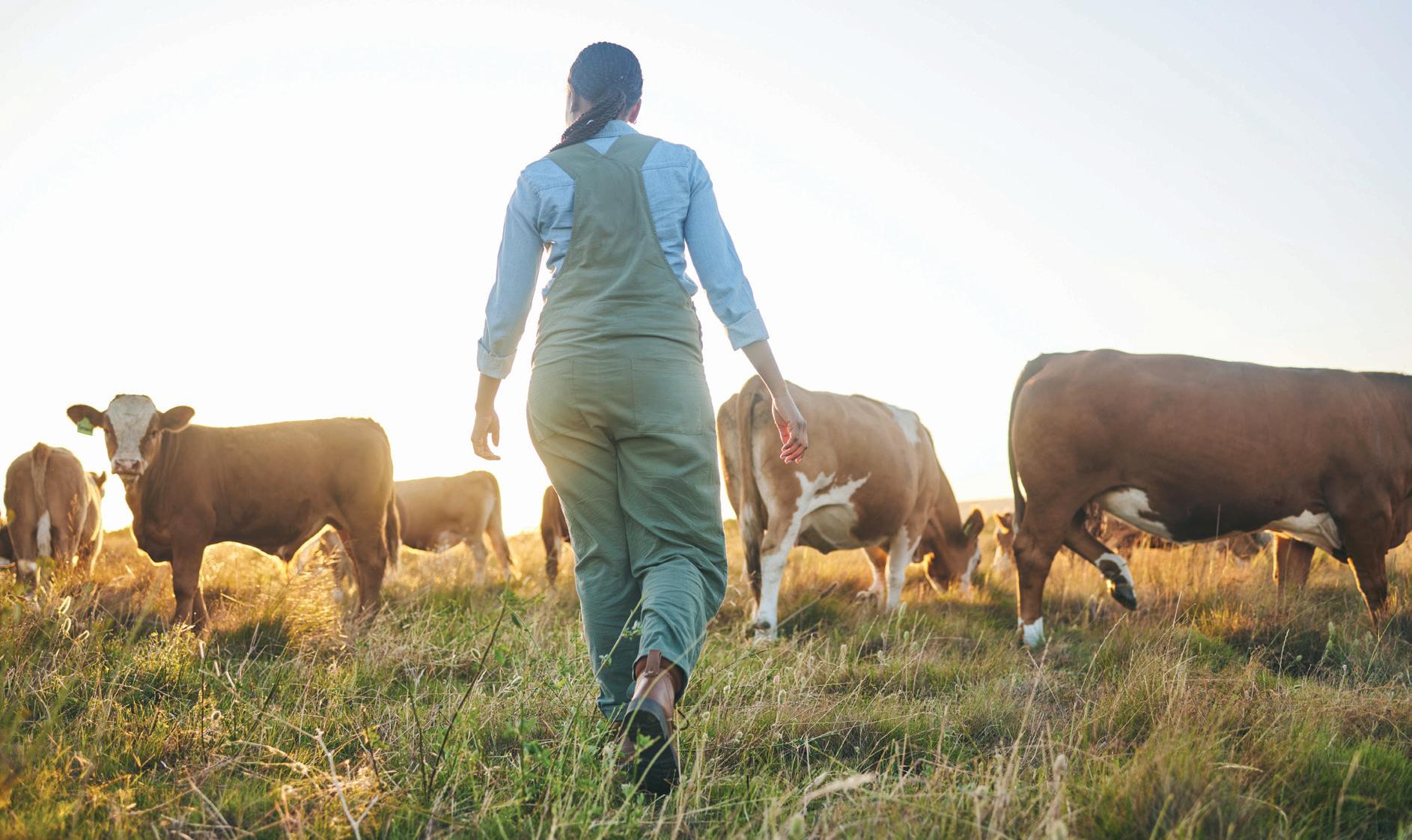
mine the specific mineral needs of your livestock.
As temperatures rise, pay attention to hydration. Ensure constant access to clean, fresh water for your livestock. Regularly check water sources for cleanliness and functionality to prevent dehydration, especially during warmer days.
Conduct regular health






checks to detect any signs of illness or distress early on. Monitor body condition scores, observe behavior and check for signs of lameness or discomfort. Early intervention can prevent the escalation of health issues.
Implement biosecurity practices to prevent the introduction and spread of diseases. Quarantine

new animals before introducing them to the herd, practice proper sanitation and limit the movement of people and equipment between different livestock areas. Minimize stressors during spring, as animals may be particularly sensitive during this season. Consider gradual changes in diet, avoid overcrowding and pro-
vide adequate shelter to protect against sudden weather changes. Collaborate with a veterinarian to develop a comprehensive health plan tailored to the specific needs of your livestock. Regular consultations with a professional can help identify and address potential health issues before they become major concerns.
8 • MARCH 9, 2024 Special Section to the Big Rapids Pioneer &FAMILY FARM MAGAZINE
Van Dyke’s Engine Rebuilding • Head Pressure Checking & Reconditioning • Crank Shaft Grinding • Engine Parts & Kits Available 17 Westwood • Fremont 231-924-3170 Since 1957 Gift Certificates Available Chainsaws • Lawn Mowers • Snow Blowers Leaf Blowers • Trimmers • Generators REPAIR & SALES Specializing in Chainsaw Sharpening & Repair Authorized Dealer For: TIMBERLAND EQUIPMENT Power Equipment Sales & Ser vice NEWAYGO 8003 Mason Dr. 231.652.5991 HARDY DAM 6245 E. 36th St. 231.689.5607 2 Locations to Serve You
Sustainable Farming and Pests
The quest for sustainable and environmentally friendly practices is more crucial than ever.
One approach gaining traction among farmers and ranchers is Integrated Pest Management (IPM). This comprehensive strategy aims to control pests and to foster a balanced ecosystem, reducing reliance on chemical interventions and promoting long-term sustainability.
IPM is a holistic and proactive approach to pest control that emphasizes preventive measures, biological controls and the strategic use of chemicals as a last resort. The core philosophy revolves around maintaining a balance between pests and their natural enemies while prioritizing the overall health of the farm or ranch ecosystem.
According to the Integrated Pest Management Global Market Report, the main types of integrated pest management are weeds, invertebrates, pathogens and vertebrates. They also predict that more agricultural growers will need to use IPM because climate change has caused an increase in the pest pop-

ulation.
MONITORING AND PREVENTION
The foundation of IPM lies in constant monitoring and early detection of potential pest threats. By closely observing crops and livestock, farmers can identify signs of pest presence before a full-blown infestation occurs. This vigilance enables the implementation of preventive measures such as crop rotation, proper irrigation practices and maintaining optimal soil health, creating an environment less conducive to pest proliferation.
In the intricate tapestry of nature, every creature plays a role. IPM harnesses the power of beneficial insects, such as ladybugs, parasitic wasps and predatory beetles, to keep pest populations in check. These natural predators act as a frontline defense, consuming or parasitizing harmful pests and reducing the need for chemical interventions. Farms and ranches practicing IPM often introduce these al-
lies strategically, creating a harmonious balance within the ecosystem.
CROP DIVERSITY
Monoculture, the practice of cultivating a single crop over extensive areas, can inadvertently invite pests to thrive. IPM advocates for crop diversity, disrupting the life cycles of pests and minimizing the risk of large-scale infestations. Companion planting, where mutually beneficial crops are grown in proximity, further enhances this diversity, promoting resilience and reducing the need for chemical inputs.
PRECISION TECHNOLOGY
Modern agriculture benefits from cutting-edge technology, and IPM is no exception. Precision farming tools, such as drones and sensors, allow farmers to monitor fields with unprecedented accuracy. This data-driven approach enables the precise application of interventions, ensuring that resources are used


efficiently and only when necessary. This targeted strategy minimizes environmental effect and safeguards against the development of pesticide-resistant pests.
Successful implementation of IPM requires knowledge and collaboration. Educating farmers and ranchers about the principles of IPM, as well as providing access to resources and support networks, is crucial. Cooperative efforts among agricultural communities can lead to shared insights and best practices, creating a network of support for those embracing this sustainable approach.




MARCH 9, 2024 • 9 Special Section to the Big Rapids Pioneer &FAMILY FARM MAGAZINE
Gleason Sales & Service 11581 N. Woodbridge • Bitely 231-745-3053 Open 9-5 Mon. - Fri., 9-3 Sat., • CLOSED TUES & SUN New & Used Dealer Service only on outboard motors, golf carts and ATVs SERVING OUR COMMUNITY SINCE 1978 Tires • Collision • Mechanical 231-734-6705 7126 30th Avenue, Evart, Michigan 49631 Jack Schooley Owner
Marketing for Farmers’ Markets
Farmers’ markets, once humble gatherings, have evolved into bustling hubs of local commerce.
For farmers and vendors participating in these markets, the challenge lies in producing quality goods and in effectively marketing them to stand out in a competitive environment.
Effective marketing helps farmers thrive in the competitive marketplace and create a lasting connection with their customers. As these markets continue to flourish, the cultivation of strong marketing strategies ensures that farmers’ produce remains at the forefront of consumers’ minds.
BRANDING AND STORYTELLING
Developing a compelling brand story creates a connection between farmers and consumers. Share the journey of your farm, highlight sustainable practices and emphasize the uniqueness of your products. Customers are increasingly drawn to the stories behind the produce they purchase.
Presentation matters.
Create visually appealing displays that showcase the freshness and variety of your products. Use colorful, well-designed sig-

nage, arrange produce in an aesthetically pleasing manner and consider offering samples to entice potential customers.
Extend your reach beyond physical markets by establishing an online presence. A user-friendly website or e-commerce platform allows customers to browse your products, place orders and even arrange for delivery
INITIATIVES
while enjoying the health benefits associated with consuming seasonal, locally grown produce.
Farm-to-table initiatives foster a sense of community. The direct connection between producers and consum-
ers encourages a deeper understanding of the food production process. Farmers’ markets, a common platform for these initiatives, become community hubs where residents interact with those who cultivate their food. This strengthens social bonds and creates
or pickup, expanding accessibility.
Leverage the power of social media to connect with customers beyond the market. Regularly update platforms like Instagram and Facebook with visually appealing posts. Share behindthe-scenes glimpses of farm life, promote special offers and encourage customer interaction.
CUSTOMER REWARDS
Rewarding loyal customers fosters repeat business. Consider implementing loyalty programs, offering discounts for returning customers or providing special perks for those who refer new clients. Building a loyal customer base is a powerful long-term marketing strategy.
Tailor your marketing strategies to reflect the changing seasons. Highlight seasonal produce, create themed promotions or offer limited-time discounts on specific items. Embracing the rhythm of the seasons keeps your offerings fresh and exciting.
Actively seek customer feedback to understand preferences and areas for
improvement. Use this information to adapt and refine your offerings. An agile approach to your product lineup based on customer input enhances satisfaction and loyalty.
Informing customers about your farming practices, the benefits of locally sourced products and the unique qualities of your offerings can set you apart. Consider hosting workshops, demonstrations or tastings to engage and educate your audience.
COLLABORATION
Collaborative efforts can amplify visibility. Partner with other vendors to create joint promotions or themed events. Cross-promotion helps tap into each other’s customer bases and adds a sense of community to the market experience.
Become an active participant in the local community. Sponsor local events, engage in charitable initiatives or collaborate with local businesses. Establishing your presence outside the farmers’ market strengthens your brand and fosters community support.
a shared commitment to supporting local businesses and sustainable practices. The sense of pride in one’s local agricultural heritage becomes a unifying force, shaping a community that actively invests in its well-being.
Restaurants embracing
farm-to-table principles are at the forefront of this culinary revolution. Chefs committed to sourcing ingredients locally provide a unique gastronomic experience and champion the cause of sustainability. Diners, in turn, enjoy the assurance of a fresh, responsibly sourced
meal, often with a menu that evolves with the seasons. This supports local farmers and encourages a shift towards a more conscious and appreciative approach to dining. Farm-to-table initiatives are cultivating a future where the food on our plates is a testament
to our commitment to community, sustainability and health. By choosing to participate in these movements, consumers actively contribute to the prosperity of local economies, reduce their environmental footprint and savor the authentic flavors of their regions.
10 • MARCH 9, 2024 Special Section to the Big Rapids Pioneer &FAMILY FARM MAGAZINE
cONTINUeD fROm pAge 2
maintain yields during challenging periods.
Livestock are particularly vulnerable during droughts due to decreased forage availability. Developing a sustainable grazing plan, supplementing feed with nutritional alternatives, and ensuring proper veterinary care can help maintain the health and productivity of livestock.
Healthy soil retains moisture more effectively. Implementing conservation tillage practices, cover cropping and mulching can enhance soil structure and reduce water evaporation, providing a buffer against drought conditions.
Investing in weather monitoring technology
and establishing early warning systems can empower farmers to make informed decisions. Timely information about impending drought conditions enables proactive adjustments to planting schedules and irrigation practices.
MITIGATING THE EFFECT
Having contingency plans for emergency feeding can prevent livestock from suffering malnutrition during droughts. Stockpiling feed or establishing relationships with reliable suppliers in advance can ensure a steady supply.
Farmers should explore insurance options and financial tools designed to
mitigate the economic effect of drought. Governments and agricultural agencies often provide assistance programs that can offer financial relief during challenging seasons.
Establishing strong community networks can be a lifeline during droughts. Sharing resources, information and best practices within the farming community fosters resilience and collective problem-solving.
Continuous learning is key to staying ahead of the curve in drought management. Farmers should stay informed about the latest advancements in agricultural practices, water-efficient technologies and drought-resistant crop varieties.
aids in allocating responsibilities effectively.
CREATING A PLAN
Seek guidance from professionals, including financial advisors, attorneys and agricultural experts. These individuals can provide valuable insights into legal, financial and operational aspects of succession planning, ensuring a comprehensive and legally sound strategy.
Formalize the succession plan in writing. Clearly outline roles, responsibilities and decision-making processes. Having a documented plan not only provides clarity but also serves as a reference point for resolving any future disputes.
Address the issue of
fairness when distributing assets and responsibilities among heirs. Consider non-farming children and their interests, and aim for a solution that is perceived as fair by all family members.
Facilitate a structured training program for the successors. Ensure that they acquire the necessary skills, knowledge and experience to successfully manage the farm. Mentorship programs and on-the-job training can be instrumental in this process.
FINANCIAL PLANNING
Evaluate the farm’s financial health and develop a plan for financial continuity. Consider tax implications, estate planning and potential sources of funding for the transition. A well-
thought-out financial strategy mitigates risks and ensures the farm’s economic sustainability.
Anticipate unforeseen circumstances by incorporating contingency plans into the succession strategy. Consider factors such as unexpected health issues, economic downturns or changes in the agricultural landscape to maintain resilience in the face of uncertainty.
Gradual transitions often yield the best results. Consider a phased handover that allows the next generation to gradually assume responsibilities while benefiting from the guidance and experience of the current generation. This approach promotes a smoother adjustment for all parties involved.
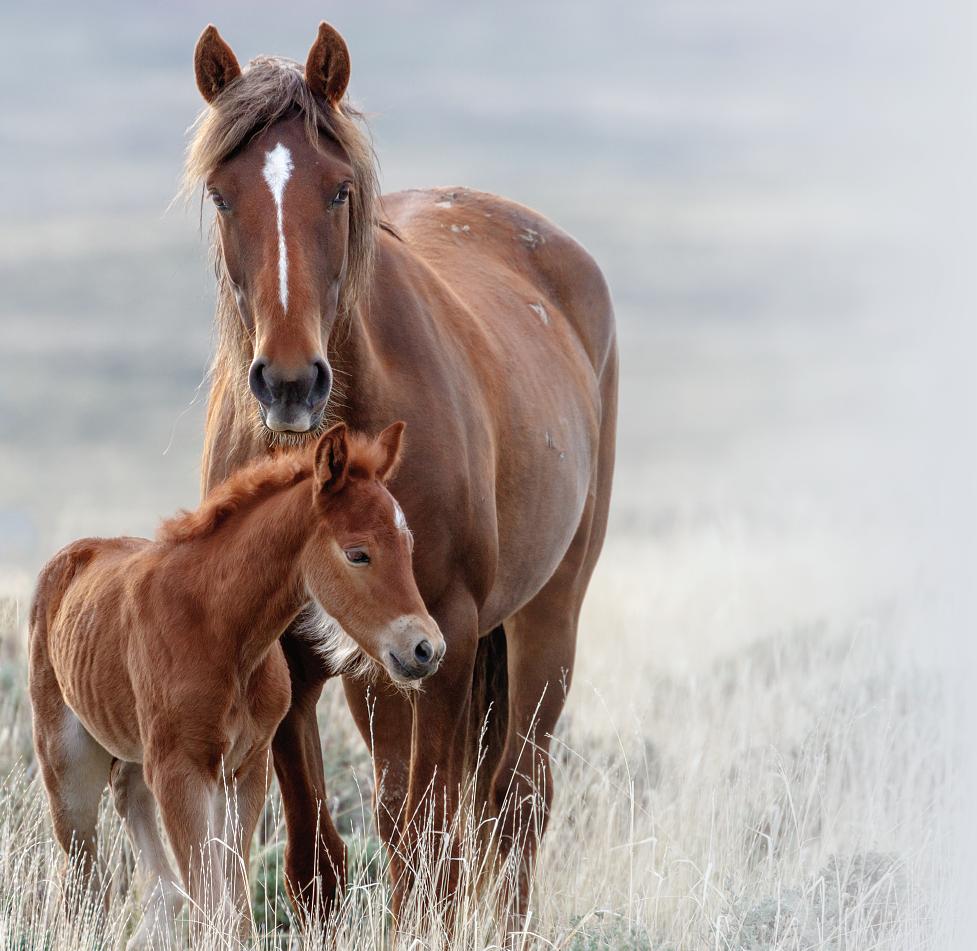


MARCH 9, 2024 • 11 Special Section to the Big Rapids Pioneer &FAMILY FARM MAGAZINE
5
EJ MILLER FE E DS LLC Drive Through Pick Up Custom Mixing of Feeds for Chickens, Cows, Pigs, Horses and More Custom Blending, Extruded Soy, & No Molasses Horse Feed Special 4H Show Feed for Pigs Specializing in Non-GMO Feeds Contact us today! 231-924-9762 3225 S Croswell Fremont, MI 49412
cONTINUeD
fROm pAge 6 cONTINUeD fROm pAge
PLANNING DROUGHT

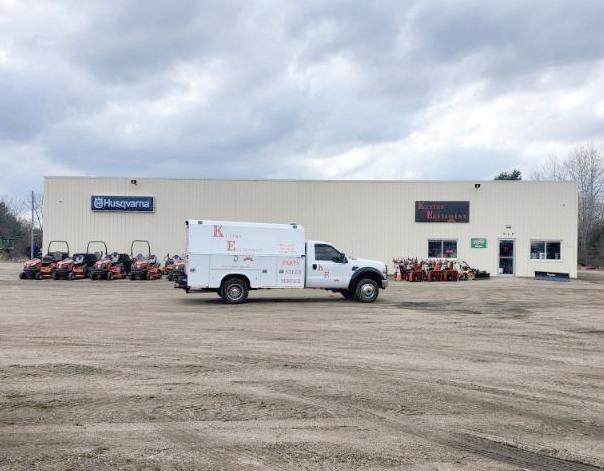














12 • MARCH 9, 2024 Special Section to the Big Rapids Pioneer &FAMILY FARM MAGAZINE 519 N. Cass street, Morley, MI 231-803-1776































































































































